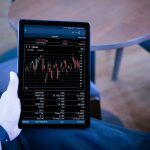Every index move tells a story. Sometimes that story is a company beat or a sector rotation, but more often, it’s a reaction to economic data. Traders who understand the calendar of macroeconomic events can anticipate volatility, manage risk, and position themselves ahead of key inflection points. In indices trading, the macro calendar is more than a schedule, it’s a trading guide.
Each Week Carries Its Own Market Pulse
Some weeks are quiet, while others explode with data. The structure of the economic calendar is predictable, but its impact is anything but. Nonfarm payrolls, inflation figures, interest rate decisions, and PMI readings each leave a mark on the market.
For example, the first Friday of every month typically brings U.S. jobs data. Index traders know to expect pre-market activity and wide price swings at the release. Similarly, mid-month CPI reports influence interest rate expectations, often leading to sudden shifts in S&P 500 and Nasdaq direction.
Mapping trades around these events means planning entries, adjusting risk parameters, and being ready to step aside when uncertainty peaks.
Central Banks Lead the Market Conversation
Few events rival central bank meetings for their ability to move markets. When the Federal Reserve, European Central Bank, or Bank of England speaks, indices listen. Traders watch not only the decision itself such as rate hikes or pauses, but the tone and forward guidance.
In indices trading, it’s common to see markets rally on a rate hike if the commentary suggests future tightening will slow. Conversely, even a dovish pause can lead to selloffs if the economic outlook is revised downward.
Preparation is everything here. Traders often reduce exposure ahead of announcements, use options for protection, or switch to more reactive strategies during the decision window.
Second-Tier Data Still Influences Sentiment
It’s not just the headline reports that matter. Secondary data points, such as consumer sentiment, retail sales, or housing starts can shape intraday movement. These figures provide texture to the broader narrative, giving traders more reasons to adjust bias or confirm setups.
For day traders or short-term swing players, these smaller releases can offer prime opportunities. A better-than-expected services PMI might spark a midday rally in the Dow. A surprise miss in manufacturing data could lead to a Nasdaq fade.
By aligning positions with the rhythm of these events, traders stay responsive rather than reactive.
Planning Trades Around the Flow of Data
Economic calendars allow traders to map out the week. For those in indices trading, this means avoiding large positions ahead of volatile events and concentrating capital during quieter, trend-friendly sessions.
Some traders even backtest performance around major releases to find recurring patterns. Do indices tend to reverse after Fed statements? Does the S&P often trend during CPI release weeks? These are insights that turn a static calendar into a dynamic trading tool.
Staying Ready Without Overcommitting
The market doesn’t always react the same way to the same event. Jobs data might trigger a rally one month and a selloff the next, depending on context. That’s why traders must approach the calendar with flexibility. It provides structure but not certainty.
Using economic events as signposts allows traders to focus energy and manage risk. But the market’s reaction still requires live decision-making. The best traders blend preparation with intuition, using the calendar as a frame not a script.
In the world of indices trading, those who understand the macro schedule are often positioned before the rest of the market catches on. They trade with context, not just with charts. And that makes all the difference.


